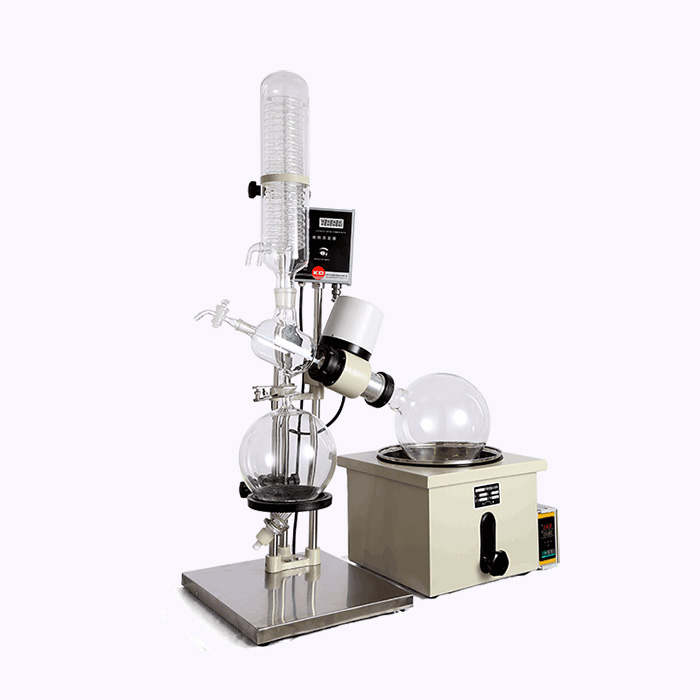Rotary evaporator advantages and disadvantages

The use of rotary evaporator in the distillation process should not only be careful, but also pay attention to the safety of use during the operation.Rotary evaporators have not only become the standard configuration of laboratories in the pharmaceutical, chemical and biopharmaceutical industries, but also play a great role in the processing of high-value samples.Because the use of liquid and vacuum heating makes the rotary evaporator a safety hazard in the laboratory, many people regard additional safety features as the most important condition.Today, I will introduce how to ensure safety when using a rotary evaporator.
In traditional distillation equipment, the distilled liquid medium can only reach the heat source at the wall of the distillation vessel.This contact can cause overheating, which can lead to uncontrollable boiling and evaporation; this will also bring safety hazards to equipment and personnel.On the other hand, too high temperature will also affect product quality or all samples will be scrapped.The vacuum (boiling and evaporation at low temperature) and rotation (to avoid overheating) of the rotary evaporator can completely control the removal process of the diluent.
The company uses polytetrafluoroethylene and rubber composite seals to maintain high vacuum; high-efficiency condensers ensure high recovery rates and continuous feeding; water bath digital constant temperature control; reasonable structure and careful use of materials; mechanical structure uses a large number of stainless steel and aluminum alloy Parts and glass parts are all made of high temperature resistant high boron glass; how can the rotary evaporator ensure the safety of use? I will give you a brief introduction below.

1.About the degree of vacuum:
The vacuum degree is the most important process parameter of the rotary evaporator, and users often encounter the problem that the vacuum degree cannot be hit, which is often related to the nature of the solvent used.The biochemical pharmaceutical industry often uses acetic acid, ethanol, propanol, ethyl ester, ethyl ether, petroleum ether, chloroform, water, toluene, etc. as solvents, but general vacuum cannot withstand strong organic solvents, and you can choose a special vacuum pump with strong corrosion resistance first. (Recommended to use water circulation vacuum pump)
A simple way to check whether the instrument is leaking:Pinch off the external vacuum hose and observe whether the vacuum gauge on the instrument can be maintained for five minutes without dropping.If there is air leakage, check whether the sealing joints and the sealing rings on the rotating shaft are effective.On the contrary, if the rotary evaporator is normal, check the vacuum pump and vacuum pipeline.
2.Regarding the temperature rise of the motor
The motor adopts E-class insulation, and the winding adopts polyester high-strength enameled wire. The operating environment and altitude do not exceed 1000 meters, the ambient temperature does not exceed 40℃, and the continuous use of the motor surface temperature rise (the difference between the surface temperature of the motor and the environment) does not exceed 45℃. It can be used with confidence.If the temperature rise exceeds 45℃, check the relevant transmission lubrication system. If the ambient temperature is high and the temperature of the water bath is high, the user can use a fan for cooling.
Daily maintenance and cleaning
Oil bath: Use deionized water or low-viscosity clean silicone oil to change weekly.
Glass components: The glass ground joints are cleaned with ethanol every week and vacuum silicone grease is applied.
Sealing ring: It is recommended to check the wear of the sealing ring quarterly (the vacuum value can be used to judge).
Host: Keep the shell and panel dry.
Cleaning: Please disconnect the power when cleaning and maintaining the instrument. Please use detergents containing surfactants or use isopropyl alcohol to clean inert stains.




